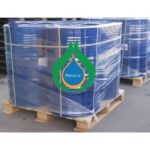The use of sodium hypochlorite in endodontics — potential complications and their management
- Sodium hypochlorite is a commonly used irrigant in endodontic practice. It has many potential complications ranging from permanent bleaching of clothes to severe soft tissue damage.
- The complications of hypochlorite extrusion beyond the root apex are discussed.
- Guidelines are given for the safe use of hypochlorite solution during endodontic treatment and advice on the appropriate course of action when a hypochlorite complication is suspected.
Abstract
Aqueous sodium hypochlorite (bleach) solution is widely used in dental practice during root canal treatment. Although it is generally regarded as being very safe, potentially severe complications can occur when it comes into contact with soft tissue. This paper discusses the use of sodium hypochlorite in dental treatment, reviews the current literature regarding hypochlorite complications, and considers the appropriate management for a dental practitioner when faced with a potentially adverse incident with this agent.
Introduction
Sodium hypochlorite (NaOCl) was first recognised as an antibacterial agent in 1843 when hand washing with hypochlorite solution between patients produced unusually low rates of infection transmission between patients. It was first recorded as an endodontic irrigant in 19201 and is now in routine worldwide use.
Sodium hypochlorite is used as an endodontic irrigant as it is an effective antimicrobial and has tissue-dissolving capabilities. It has low viscosity allowing easy introduction into the canal architecture, an acceptable shelf life, is easily available and inexpensive. The toxicity of its action to vital tissues and corrosion of metals2 are its main disadvantages in dental use. Sodium hypochlorite reacts with fatty acids and amino acids in dental pulp resulting in liquefaction of organic tissue.3 There is no universally accepted concentration of sodium hypochlorite for use as an endodontic irrigant. The antibacterial and tissue dissolution action of hypochlorite increases with its concentration, but this is accompanied by an increase in toxicity. Concentrations used vary down from 5.25% depending on the dilution and storage protocols of individual practitioners. Solution warmers are available to increase the temperature up to 60°C. Increasing the temperature of a solution of hypochlorite improves the bactericidal and pulp dissolution activity, although the effect of heat transfer to the adjacent tissues is uncertain.4
As a bleaching agent, inadvertent spillage of this agent can result in damage to clothing and soft tissues. Inadvertent introduction of sodium hypochlorite beyond the root canal system may result in extensive soft tissue or nerve damage, and even airway compromise. This article reviews the potential complications that can occur with sodium hypochlorite in clinical practice, discusses measures that can be taken to minimise risk, and provides details of appropriate management in the rare cases of suspected tissue damage.
Complications of accidental spillage
1) Damage to clothing
Accidental spillage of sodium hypochlorite is probably the most common accident to occur during root canal irrigation. Even spillage of minute quantities of this agent on clothing will lead to rapid, irreparable bleaching. The patient should wear a protective plastic bib, and the practitioner should exercise care when transferring syringes filled with hypochlorite to the oral cavity.
2) Eye damage
Seemingly mild burns with an alkali such as sodium hypochlorite can result in significant injury as the alkali reacts with the lipid in the corneal epithelial cells, forming a soap bubble that penetrates the corneal stroma. The alkali moves rapidly to the anterior chamber, making repair difficult. Further degeneration of the tissues within the anterior chamber results in perforation, with endophthalmitis and subsequent loss of the eye.5
Ingram recorded a case of accidental spillage of 5.25% sodium hypochlorite into a patient’s eye during endodontic therapy.6 The immediate symptoms included instant severe pain and intense burning, profuse watering (epiphora) and erythema. Loss of epithelial cells in the outer corneal layer may occur. There may be blurring of vision and patchy colouration of the cornea.7 Immediate ocular irrigation with a large amount of water or sterile saline is required followed by an urgent referral to an ophthalmologist.8 The referral should ideally be made immediately by telephone to the nearest eye department. The use of adequate eye protection during endodontic treatment should eliminate the risk of occurrence of this accident, but sterile saline should always be available to irrigate eyes injured with hypochlorite. It has been advised that eyes exposed to undiluted bleach should be irrigated for 15 minutes with a litre of normal saline.9,10
3) Damage to skin
Skin injury with an alkaline substance requires immediate irrigation with water as alkalis combine with proteins or fats in tissue to form soluble protein complexes or soaps. These complexes permit the passage of hydroxyl ions deep into the tissue, thereby limiting their contact with the water dilutant on the skin surface.
Water is the agent of choice for irrigating skin and it should be delivered at low pressure as high pressure may spread the hypochlorite into the patient’s or rescuer’s eyes.5
4) Damage to oral mucosa
Surface injury is caused by the reaction of alkali with protein and fats as described for eye injuries above. Swallowing of sodium hypochlorite requires the patient to be monitored following immediate treatment. It is worth noting that skin damage can result from secondary contamination.
Allergy to sodium hypochlorite
The allergic potential of sodium hypochlorite was first reported in 1940 by Sulzberger11 and subsequently by Cohen and Burns.12 Caliskan et al. presented a case where a 32-year-old female developed rapid onset pain, swelling, difficulty in breathing and subsequently hypotension following application of 0.5 ml of 1% sodium hypochlorite.13 The patient required urgent hospitalisation in the intensive care unit and management with intravenous steroids and antihistamines. A subsequent allergy skin scratch test performed two weeks after the patient was discharged confirmed a highly positive result to sodium hypochlorite. The usefulness of this test in suspected cases of sodium hypochlorite allergy during endodontic treatment has been confirmed by Kaufman and Keila.14 Even though allergy to sodium hypochlorite is rare, it is important for clinicians to recognise the symptoms of allergy and possible anaphylaxis. These may include urticaria, oedema, shortness of breath, wheezing (bronchospasm) and hypotension. Urgent referral to a hospital following first aid management is recommended.
Complications arising from hypochlorite extrusion beyond the root apex
1) Chemical burns and tissue necrosis
When sodium hypochlorite is extruded beyond the root canal into the peri-radicular tissues, the effect is one of a chemical burn leading to a localised or extensive tissue necrosis. Given the widespread use of hypochlorite, this complication is fortunately very rare indeed. A severe acute inflammatory reaction of the tissues develops. This leads to rapid tissue swelling both intra orally within the surrounding mucosa and extra orally within the skin and subcutaneous tissues. The swelling may be oedematous, haemorrhagic or both, and may extend beyond the region that might be expected with an acute infection of the affected tooth (Figs 1, 2). Sudden onset of pain is a hallmark of tissue damage, and may occur immediately or be delayed for several minutes or hours.18Involvement of the maxillary sinus will lead to acute sinusitis.19 Associated bleeding into the interstitial tissues results in bruising and ecchymosis of the surrounding mucosa and possibly the facial skin (Fig. 3) and may include the formation of a haematoma.15, 20 A necrotic ulceration of the mucosa adjacent to the tooth may occur as a direct result of the chemical burn.21 This reaction of the tissues may occur within minutes or may be delayed and appear some hours or days later.20, 22 If these symptoms develop, urgent telephone referral should be made to the nearest maxillofacial unit. Patients will be assessed by the on call maxillofacial team. Treatment is determined by the extent and rapidity of the soft tissue swelling but may necessitate urgent hospitalisation and administration of intravenous steroids and antibiotics.7, 18 Although the evidence for the use of antibiotics in these patients is anecdotal, secondary bacterial infection is a distinct possibility in areas of necrotic tissue and therefore they are often prescribed as part of the overall patient management. Surgical drainage or debridement may also be required depending on the extent and character of the tissue swelling and necrosis.7, 18, 19




